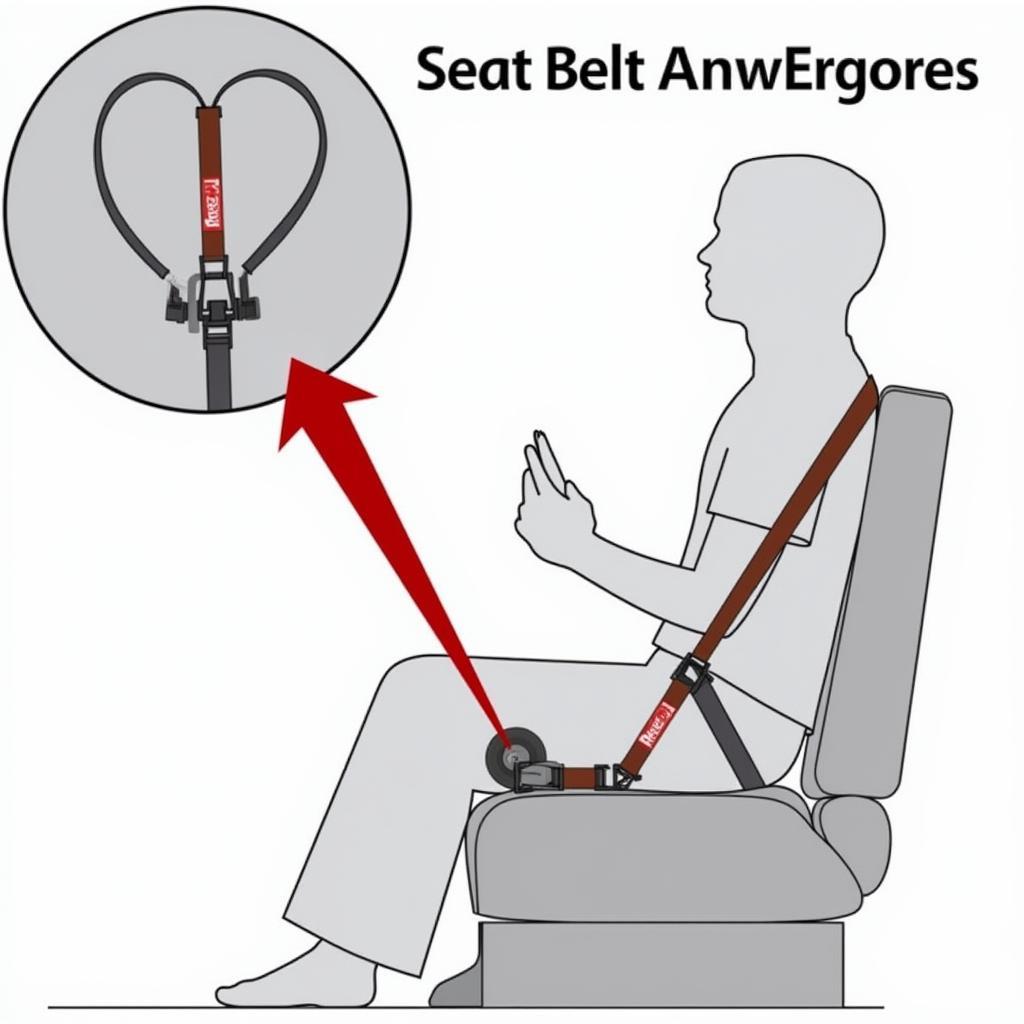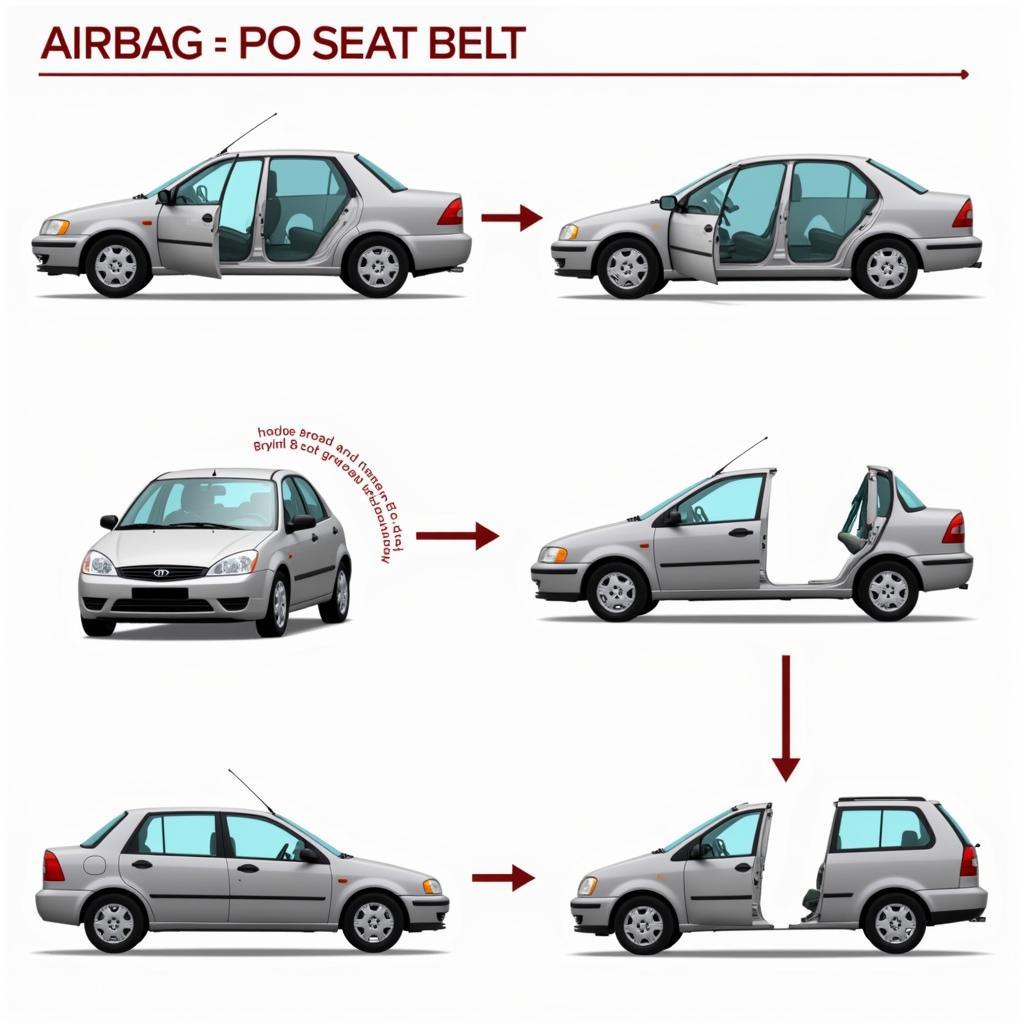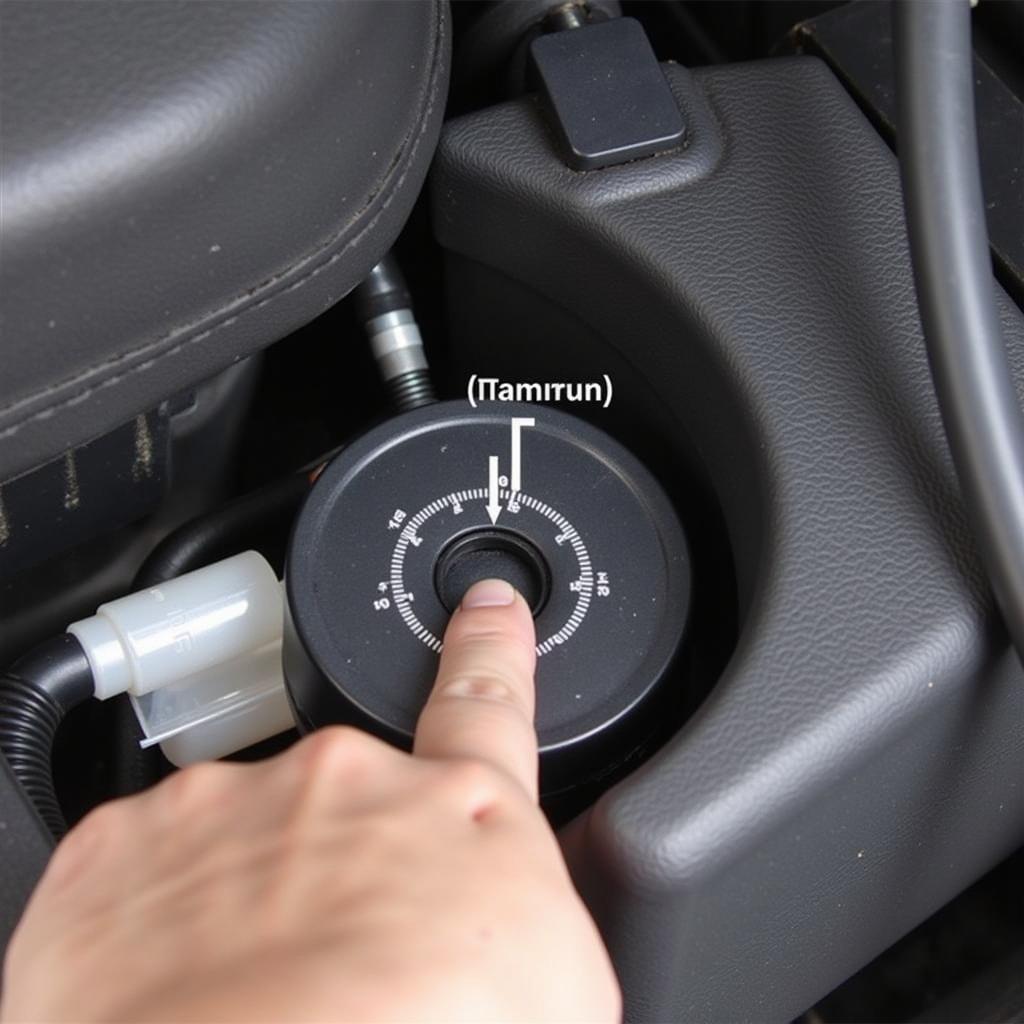The persistent chime and flashing light of a seat belt warning system are meant to be a nuisance – a constant reminder to buckle up for your safety. However, searching for a “seat belt warning bypass insert” suggests you’re looking for a way to silence these alerts, perhaps even considering a physical device to override the system. While the frustration is understandable, it’s crucial to understand the serious safety and legal ramifications before proceeding.
This article will delve into the functionality of seat belt warning systems, the dangers of bypassing them, and suggest safer, more responsible alternatives to address the root cause of your frustration.
The How and Why of Seat Belt Warnings
Modern vehicles employ a seat belt warning system comprised of sensors and an electronic control unit (ECU). When the ignition is on, and the seat is occupied, the sensor detects if the belt is fastened. If not, the ECU triggers audible chimes and visual cues to alert the driver.
This system isn’t just an annoyance; it’s a critical safety feature. Seat belts are scientifically proven to reduce the risk of severe injury or fatality in an accident by:
- Preventing Ejection: Seat belts keep you secured inside the vehicle, greatly reducing the chances of being thrown out during a crash.
- Distributing Impact Force: They distribute the force of a collision over a larger area of your body, lessening the impact on any one area.
- Slowing Momentum: Seat belts work in tandem with airbags to slow your body’s forward motion in a controlled manner, minimizing injury.
 Seat Belt Mechanism
Seat Belt Mechanism
The Dangers of Bypassing Seat Belt Warnings
While tempting, using a “seat belt warning bypass insert” presents several risks:
- Increased Injury Risk: This is paramount. Bypassing the warning system significantly increases your risk of severe injury or death in an accident.
- Legal Consequences: Depending on your location, using a bypass device may be illegal and could result in fines or affect your insurance coverage in case of an accident.
- Airbag Malfunction: Seat belt sensors often work in conjunction with airbags. Tampering with one can disrupt the other, leading to ineffective airbag deployment or even causing them to deploy when not needed.
 Airbag Deployment in Action
Airbag Deployment in Action
Addressing the Root of the Problem
Instead of seeking a bypass, consider these safer alternatives:
- Check for Malfunctions: A faulty sensor or wiring issue could be triggering a false warning. Have your vehicle inspected by a qualified mechanic to diagnose and fix the problem.
- Adjust Seat Position: Sometimes, adjusting your seat position can prevent the sensor from triggering unnecessarily.
- Consult Your Dealer: Certain vehicle models might have software updates available to adjust the sensitivity of the warning system.
dodge dakota 2006 seat belt warning disable
When the Warning Persists: A Case for Remote Diagnostics
If the warning persists despite these measures, your vehicle may have underlying electronic issues. This is where remote diagnostics and software solutions can be incredibly valuable.
Imagine this: You’re experiencing persistent seat belt warnings, but a trip to the mechanic is inconvenient. With remote diagnostics, a certified technician can access your vehicle’s computer system remotely, pinpoint the issue, and potentially even resolve it through software updates or adjustments – all without you leaving your home!
h2 hummer seat belt warning not working
Putting Safety First
While the desire to silence a nagging warning is understandable, remember that seat belt warnings are there to protect you. Instead of seeking to bypass them, prioritize your safety by addressing the root cause of the problem. Explore safer alternatives like vehicle inspections, adjustments, or even remote diagnostics to ensure that your seat belt warning system functions as intended – a silent guardian ready to alert you when it matters most.

